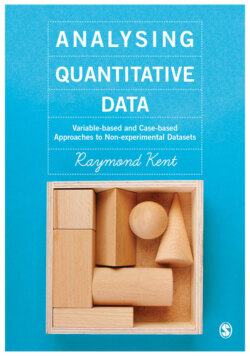Читать книгу Analysing Quantitative Data - Raymond A Kent - Страница 30
На сайте Литреса книга снята с продажи.
Checking and editing
ОглавлениеMost quantitative data in the social sciences will have been captured using some form of questionnaire, whether paper or electronic, so the first step involves checking these for usability as they are received. Questionnaires returned by interviewers or by respondents may be unusable for a number of reasons, for example:
an unacceptable number of the questions that are appropriate for a given respondent have not been answered;
the pattern of responses is such that it indicates that the respondent did not either understand or follow instructions – for example, questions that require a single response may have been given two or more responses;
one or more pages are physically missing;
the questionnaire has been answered by somebody who is not a member of the survey population;
the questionnaire was received too late to include in the analysis.
The number of returned but unusable questionnaires will generally be quite small, so discarding these will not usually be a problem. If the number of discards is large, the researcher will need to check whether they are in any obvious way different from those that are usable. Either way the number of discards should be declared in the report of the research.
Editing involves verifying response consistency and accuracy, making necessary corrections and deciding whether some or all parts of a questionnaire should be discarded. Some of these checks include:
logical checks, for example a 16 year old claiming to have a PhD, a male claiming to have had an epidural at the birth of his last child, or a respondent may have answered a series of questions about his or her usage of a particular product, but other responses indicate that he or she does not possess one or has never used one;
range checks, for example a code of 8 is entered when there are only six response categories for that question;
response set checks, for example somebody has ‘strongly agreed’ with all the items on a Likert scale.
Where a question fails a logical check, then the pattern of responses in the rest of the questionnaire may be scrutinized to see what is the most likely explanation for the apparent inconsistency. Range check failures may be referred back to the original respondent. Response set checks may indicate that the respondent is simply being frivolous and the questionnaire may be discarded.
If questionnaires are checked and edited as they come in, it may still be possible to remedy fieldwork deficiencies before they turn into a major problem. If problems are traced to particular interviewers, for example, then they can be replaced or asked to undergo further training. It may be possible to re-contact respondents to seek clarification or completion before the last date on which data can be processed. If this is not feasible, the researcher can treat these as missing values, that is, treat the questions involved as unanswered. This may be suitable if the unsatisfactory responses are not key properties and the number of questions concerned is quite small. If this is not the case, values may be imputed. How this can be done is discussed later in the chapter. The alternative is to discard the questionnaire.
